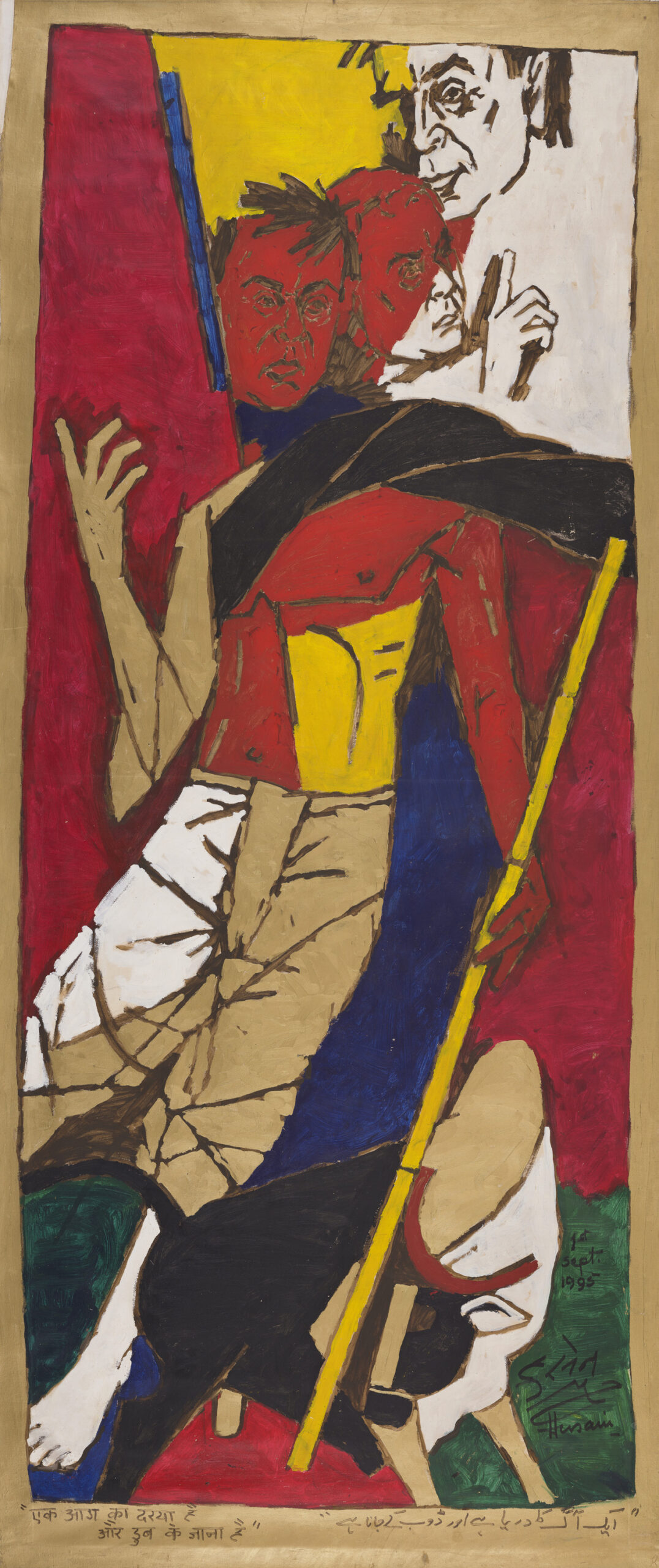Dilip Kumar (1922 – 2021)
Actor and film producer
Artist M. F. Husain (1915 – 2011)
dated 1995, Acrylic on canvas
122 x 52 in. (309.9 x 132 cm.)
In 1995, the iconic painter M.F. Husain encountered one of Indian cinema’s most legendary actors—Dilip Kumar—at a film screening. The film, titled Ek Aag Ka Dariya Hai, was meant to be a profound reflection on human struggle and identity, but it was never released. Nevertheless, the meeting left a lasting impression on Husain. Inspired by Dilip Kumar’s, majestic presence and the gravitas he carried even off-screen, Husain created a striking portrait of the actor using acrylic on canvas. The composition, vibrant and deeply expressionistic, captures a layered introspection. Dilip Kumar’s dual-toned faces, partially fused with dramatic brushwork and symbolic elements, evoke themes of duality, memory, and performance. The bold red and yellow background, with expressive postures and theatrical staging, pays homage to the actor’s intense screen persona, the emotional weight of his cinematic legacy, and the timeless resonance of his art.
In contrast, the second work is an intimate and spontaneous portrait of industrialist Dhirubhai Ambani, drawn with ink and pastel on paper. It was executed during a visit to the Maker Chambers office, where Husain was accompanied by a mutual politician friend.
At the time, Husain was in the midst of completing his ambitious film project Gaja Gamini—but had run out of funds. This meeting was partially motivated by a search for patronage to support the film’s completion. Despite this, Husain’s rendering of Dhirubhai is personal, almost meditative. The quick lines capture Ambani’s signature gesture—hand resting against his chin in thoughtful repose—framed against abstract blocks of red and blue. The composition feels like a conversation frozen in time, blending corporate might with a quiet humanity.
Both portraits reveal Husain’s unique ability to move between the epic and the personal, the performative and the spontaneous. He bridges two different India’s—one driven by storytelling, the other by enterprise, through the two paintings.
M.F. Husain remains one of India’s most celebrated and controversial modernists. A master draughtsman, fearless experimenter, and cultural chronicler, he painted barefoot, often on vast canvases, and viewed painting as a form of performance. His works are as much about bold line and color as they are about the people, myths, and politics of his time—always immediate, always alive. Husain’s deep engagement with Indian identity, cinema, mythology, and modern life gave his art both global relevance and local resonance. Whether painting horses in a storm or goddesses in motion, he brought intensity, playfulness, and spiritual energy to everything he touched. He has left behind a legacy that transcends borders and generations.
